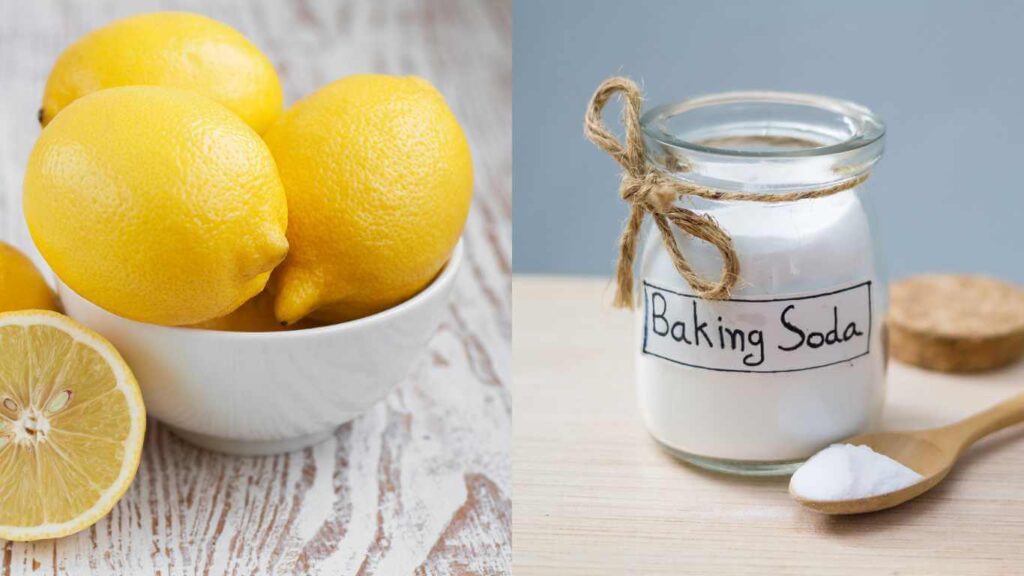Hey there, fellow drummers! It’s Ron here, ready to dive into the shimmering world of cymbals. As any seasoned percussionist knows, cymbals are more than just pieces of metal; they are the delicate, shimmering heart of our drum kits. Today, we’re talking cymbal care – how to keep them clean, shiny, and sounding their best through simple, DIY methods.
Cymbals, often an investment, require regular maintenance to preserve their sound and appearance. Neglected cymbals can lose their tonal quality and luster. But fear not! I’ll guide you through easy and effective ways to care for your cymbals, ensuring they continue to add the perfect crash, splash, and ride to your music.
Understanding Your Cymbals
Before diving into the nitty-gritty of cymbal care, it’s crucial to understand the fundamentals of what your cymbals are made of and the finishes they come with. This knowledge not only helps in applying the right cleaning methods but also in preserving the unique sound qualities of your cymbals.
Knowing Your Metal
Cymbals are primarily made from bronze, an alloy of copper and tin, but the proportions can vary. The most common types are B20 and B8 bronze. B20, containing about 20% tin and 80% copper, is favored for its rich, complex tonal qualities and is commonly used in high-end cymbals. On the other hand, B8, with 8% tin, tends to produce a brighter, more focused sound and is often found in more budget-friendly options.
The composition of these alloys not only influences the sound but also impacts the cymbal’s response to cleaning agents and susceptibility to tarnishing. For instance, B20 alloys may require more delicate handling due to their higher tin content, which can be more prone to oxidation and staining.

Identifying Finish Types
Cymbals also come in various finishes, each requiring different care approaches:
- Traditional Finish: These cymbals have a more natural, matte appearance and are generally less prone to showing fingerprints and smudges. They can be more forgiving when it comes to cleaning and maintenance.
- Brilliant Finish: These are high-gloss cymbals that are buffed to a shine. While they look stunning, they can show fingerprints and marks more easily and may require regular cleaning to maintain their luster. Using the wrong cleaning method can dull their shine, so it’s important to be extra cautious.
- Raw Finish: Some cymbals have a raw or unlathed finish, displaying a more rugged look. These types of cymbals often require the least maintenance, as they are designed to age naturally and develop a patina over time.
Understanding these aspects of your cymbals not only helps in their maintenance but also enriches your appreciation of the instrument. Each cymbal type brings its unique character to your drum kit, both visually and sonically. Knowing what you have in your set-up is the first step towards ensuring they remain in top condition, contributing their full sonic potential to your music.
Cleaning 101: Basic Cymbal Maintenance
Properly maintaining your cymbals is essential for preserving their sound and appearance. Even basic upkeep, if done regularly, can significantly extend the life and performance of your cymbals. Here are some fundamental steps for basic cymbal maintenance.
Regular Dusting
The simplest yet most effective way to care for your cymbals is to keep them dust-free. Dust, dirt, and even fingerprints can accumulate on the surface, affecting both the look and sound of the cymbals. Regularly wiping your cymbals down with a soft, dry cloth can prevent this build-up.
- Gentle Cleaning: Always use a microfiber or other non-abrasive cloth for dusting. Gently wipe the surface of the cymbal in a circular motion, following the lathing lines. This not only removes dust but also helps in avoiding unnecessary scratches.
- Frequency: Ideally, you should wipe down your cymbals after every use, especially if you’re playing in environments where dust or smoke is prevalent. Even if the cymbals aren’t in regular use, a periodic dusting will keep them in optimal condition.
Washing with Soapy Water
For a more thorough cleaning, a mild soap and water solution can be used. This method can help remove more stubborn dirt and grime that a simple dusting won’t take care of.
- Preparing the Solution: Mix a small amount of mild dish soap with lukewarm water. Avoid using hot water or harsh detergents, as they can damage the cymbal’s finish.
- Washing Process: Use a soft sponge or cloth to gently clean the cymbal’s surface. Start from the center and work your way outwards in a circular motion. Be careful around the cymbal’s logo, as vigorous scrubbing can cause it to fade.
- Rinsing and Drying: Rinse the cymbal thoroughly with clean water to remove any soap residue. It’s crucial to dry the cymbal immediately and completely with a soft towel to prevent water spots or rusting.
Remember, while cleaning your cymbals is important, the key is to do it gently and with the right materials. Abrasive cleaners, rough sponges, or scrubbing too hard can leave permanent marks or scratches, detracting from both the appearance and the sound quality of your cymbals. Regular, gentle cleaning will ensure that your cymbals continue to look and sound great for years to come.
Advanced Cleaning: Removing Tarnish and Oxidation
Over time, cymbals can develop tarnish and oxidation, which not only affects their appearance but can also impact their sound. While basic cleaning is suitable for regular maintenance, tackling tarnish and oxidation requires a more advanced approach. Here’s how you can restore your cymbals to their former glory.
DIY Cleaning Solutions
Sometimes, cymbals need more than just soap and water. For removing stubborn tarnish and oxidation, you can create effective DIY cleaning solutions using household items. These solutions can gently lift the tarnish without damaging the cymbal’s surface.
- Vinegar and Baking Soda: A classic combination for natural cleaning, vinegar and baking soda can work wonders on tarnished cymbals. Mix them into a paste, apply it to the tarnished areas, let it sit for a few minutes, then gently scrub with a soft brush or cloth. The mild acidic nature of vinegar helps break down the tarnish, while baking soda acts as a gentle abrasive to lift it away.
- Lemon Juice and Salt: Another effective natural cleaner, lemon juice’s acidity, combined with the abrasiveness of salt, can help remove tarnish. Apply a mixture of lemon juice and salt to the affected areas, then gently scrub. Be sure to rinse the cymbal thoroughly afterward to remove any residual acidity.

Polishing for Brilliance
After you’ve removed the tarnish, polishing your cymbals can help bring back their shine, especially for cymbals with a brilliant finish. It’s important to use a polish specifically designed for cymbals to avoid any potential damage.
- Using Cymbal Polish: Apply a small amount of cymbal polish to a clean, soft cloth, and gently rub it onto the cymbal in circular motions. Follow the lathing lines to ensure even application. Once you’ve covered the entire surface, use a clean cloth to buff the cymbal to a shine.
- Precautions: Be cautious around the cymbal’s logo, as excessive polishing can cause it to wear off. Also, remember that some drummers prefer their cymbals to develop a natural patina over time, as it can slightly alter the sound characteristics.
Removing tarnish and oxidation from your cymbals not only improves their appearance but can also preserve their sound quality. It’s important, however, to approach this process with care, using the right materials and techniques to avoid any damage. Regular advanced cleaning sessions, coupled with routine maintenance, will ensure that your cymbals remain a sparkling and sonorous part of your drum kit.
Preventive Care: Protecting Your Cymbals
Taking proactive steps to care for your cymbals is crucial in preserving their sound quality and appearance. Preventive care helps avoid issues like tarnishing, warping, and cracking, ensuring that your cymbals remain in top condition for longer. Here are some essential preventive care tips.
Proper Handling
How you handle your cymbals can significantly impact their longevity. Oils and dirt from your hands can lead to quicker tarnishing and degradation of the metal.
- Clean Hands or Gloves: Always handle your cymbals with clean hands or, better yet, wear gloves. This prevents oils from your skin from transferring to the cymbals.
- Lifting Technique: When picking up cymbals, lift them by their edges, not the surface. This reduces the risk of dropping them and avoids fingerprint marks on the main playing area.
Storage and Transportation
Storing and transporting your cymbals properly can prevent many common forms of damage, such as dents, scratches, and warping.
- Dry and Cool Storage: Store your cymbals in a dry, cool place when not in use. Excessive moisture can lead to rusting, and high temperatures can cause warping.
- Cymbal Bags or Cases: Invest in quality cymbal bags or cases, especially for transportation. These not only make it easier to carry your cymbals but also provide protection against bumps and scratches.
- Avoid Stacking Without Protection: If you need to stack your cymbals, place protective sleeves between them. This prevents scratches and maintains the integrity of each cymbal’s edge.
Mounting Precautions
Properly mounting your cymbals on stands is also a critical aspect of their care.
- Avoid Over-tightening: When mounting cymbals, ensure they have enough room to swing freely. Over-tightening can lead to keyholing (where the hole in the cymbal becomes misshapen) and restricts the natural movement, affecting the sound.
- Use Plastic or Rubber Sleeves: Always use plastic or rubber sleeves on the cymbal stands. These provide a cushion between the metal of the stand and your cymbal, reducing metal-to-metal contact that can cause damage.
Regular Check-ups
Regular inspections can catch potential problems before they become serious.
- Inspect for Cracks and Keyholing: Regularly check your cymbals for signs of cracks, especially around the edges and the center hole. Early detection can prevent a small crack from turning into a cymbal-breaking issue.
- Monitor Stand and Hardware Condition: Ensure that the stands and hardware are in good condition and not causing undue stress or damage to the cymbals.
By incorporating these preventive care strategies into your routine, you can significantly extend the life of your cymbals. Remember, a little effort in maintaining your cymbals can save you a lot of time and money in the long run, not to mention ensuring that they always sound their best whenever you play.
Taking care of your cymbals doesn’t just preserve their look; it maintains their sound quality and prolongs their life. Regular maintenance and proper handling ensure that your cymbals will continue to add the necessary sparkle and crash to your drumming for years to come. Remember, a little care goes a long way in the world of cymbals.




